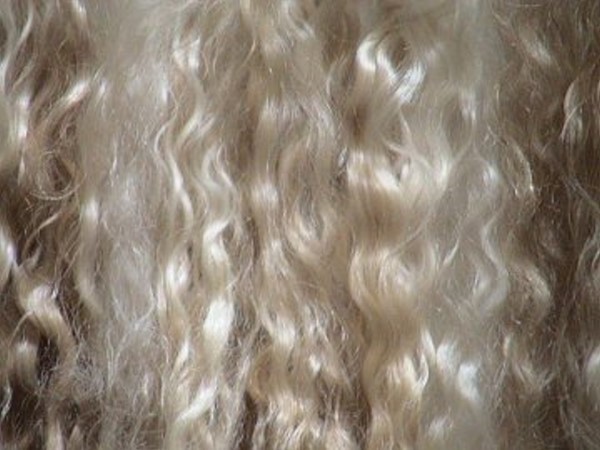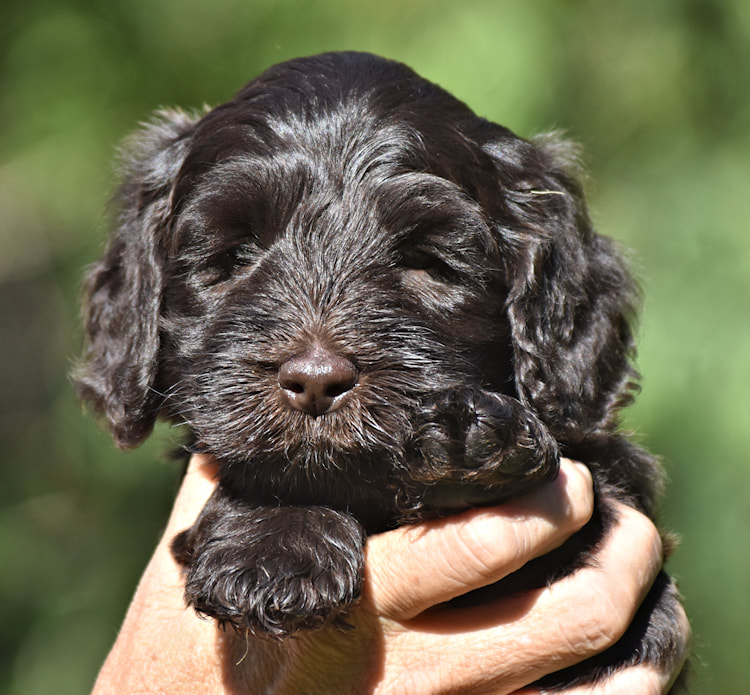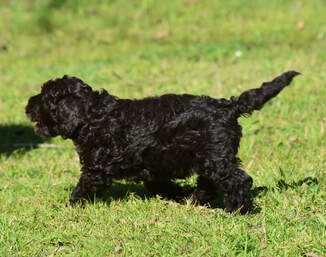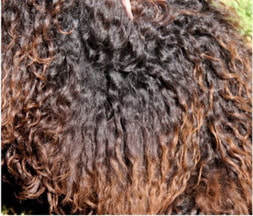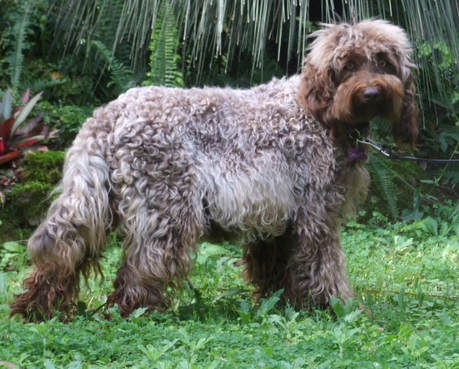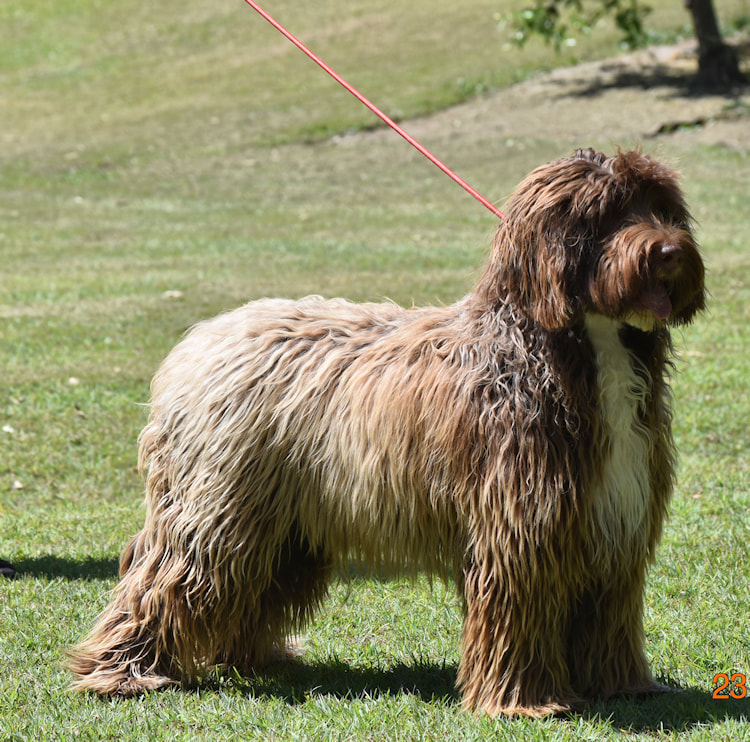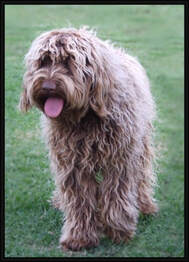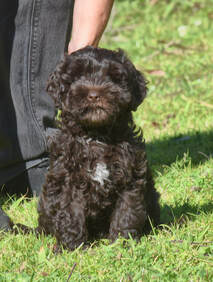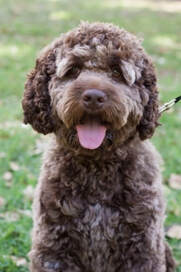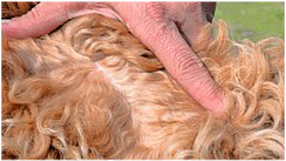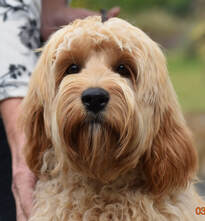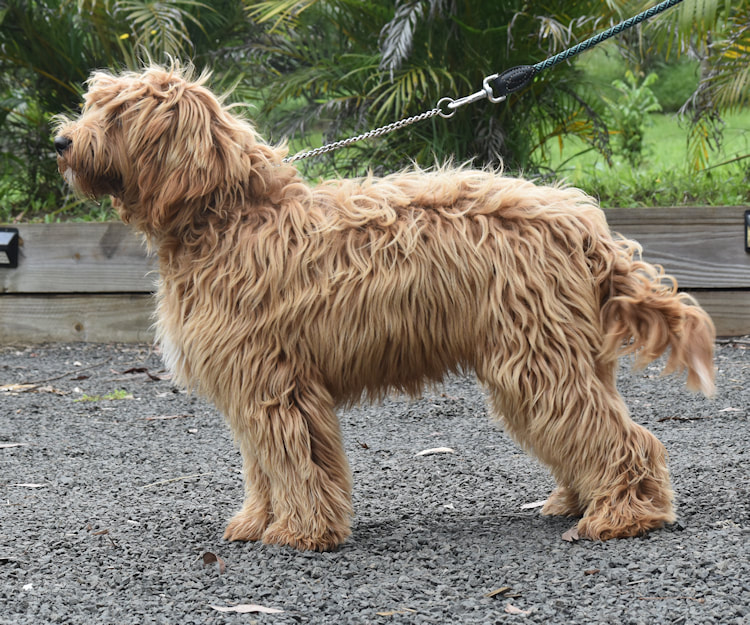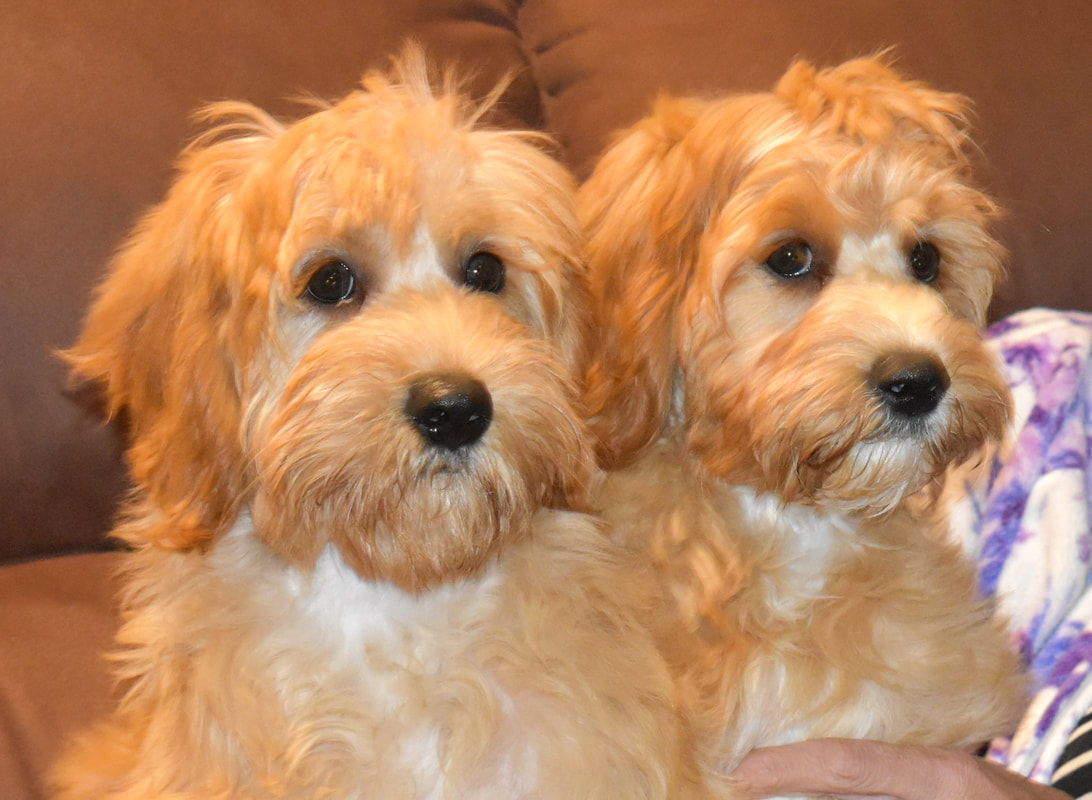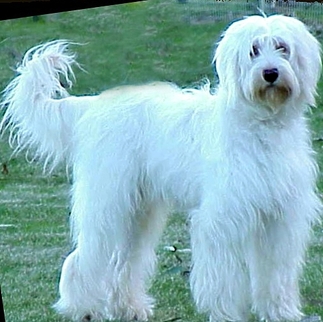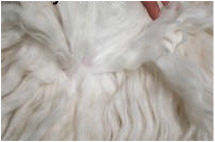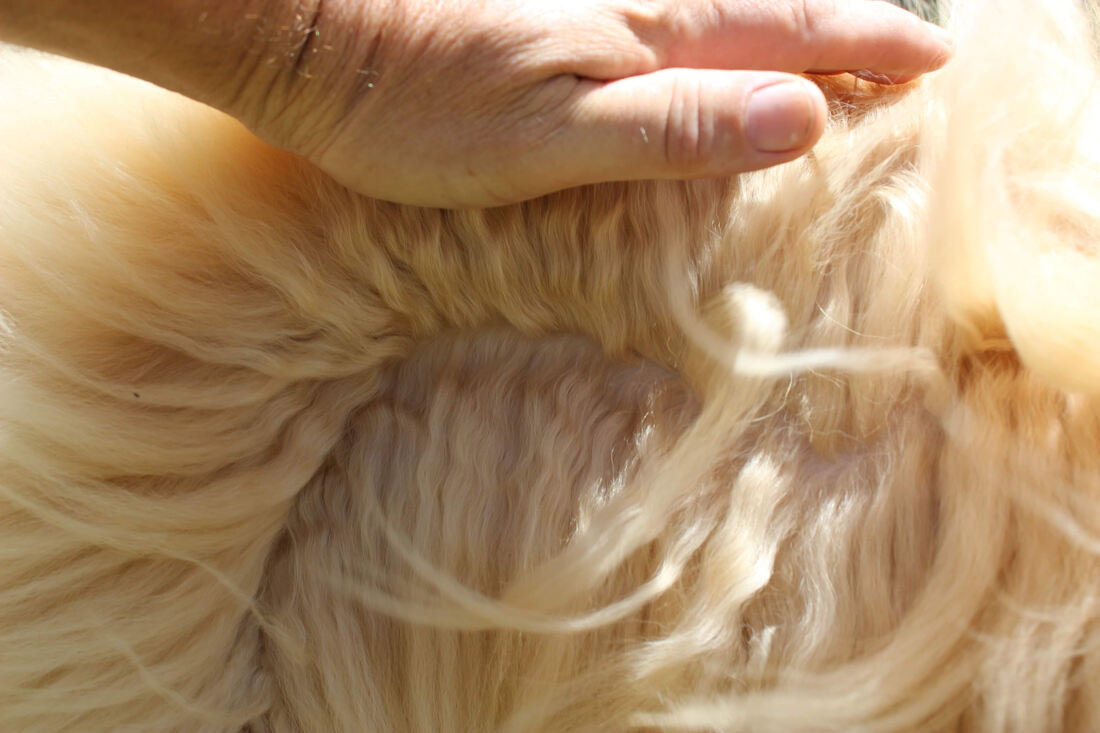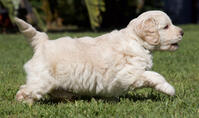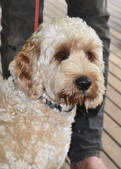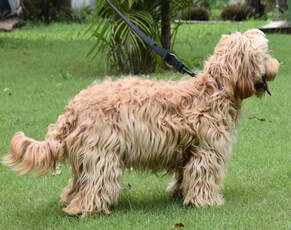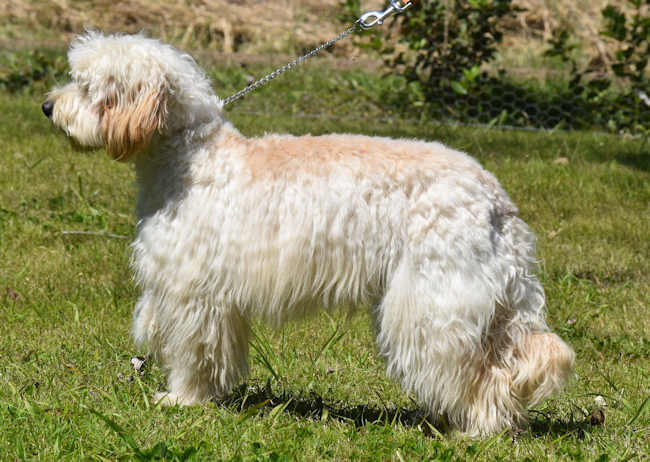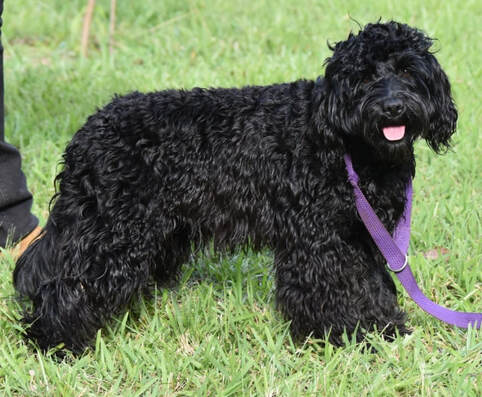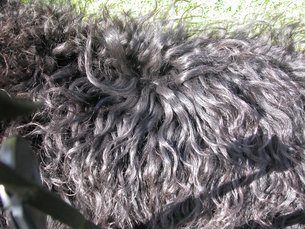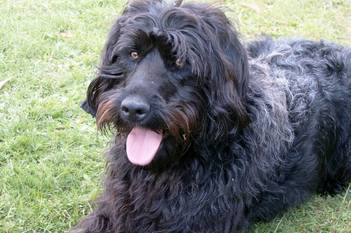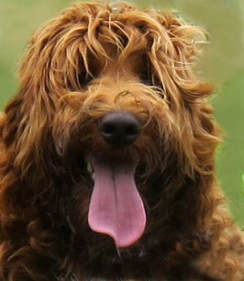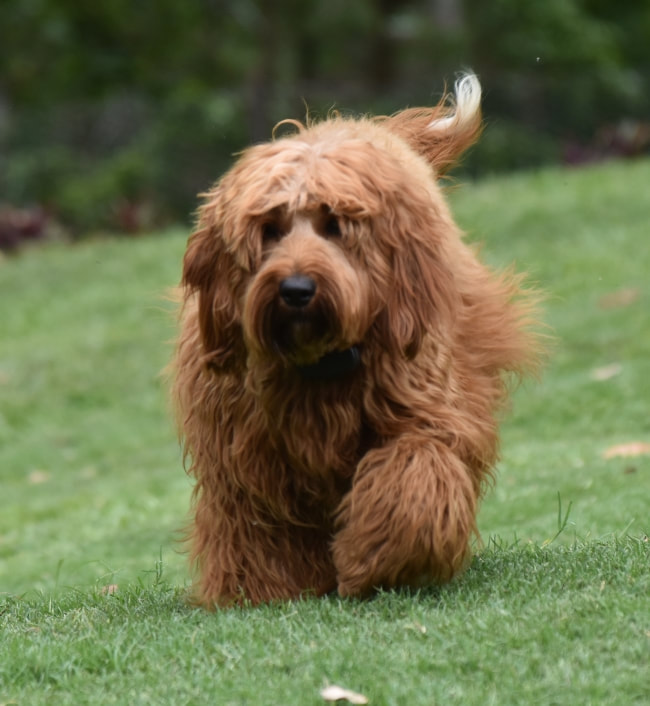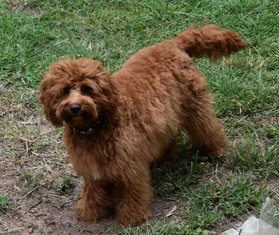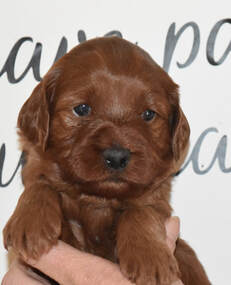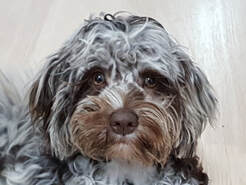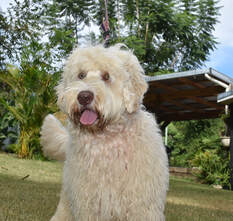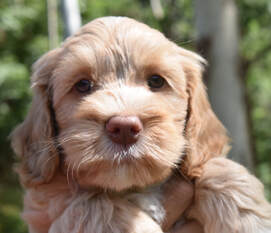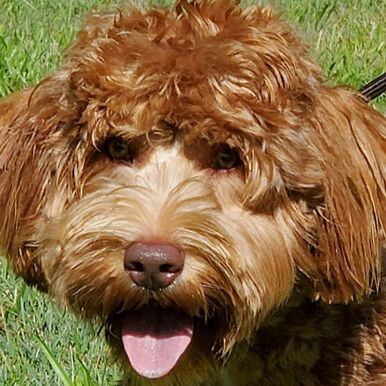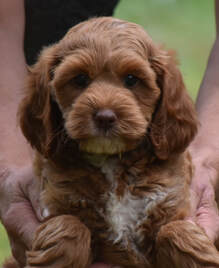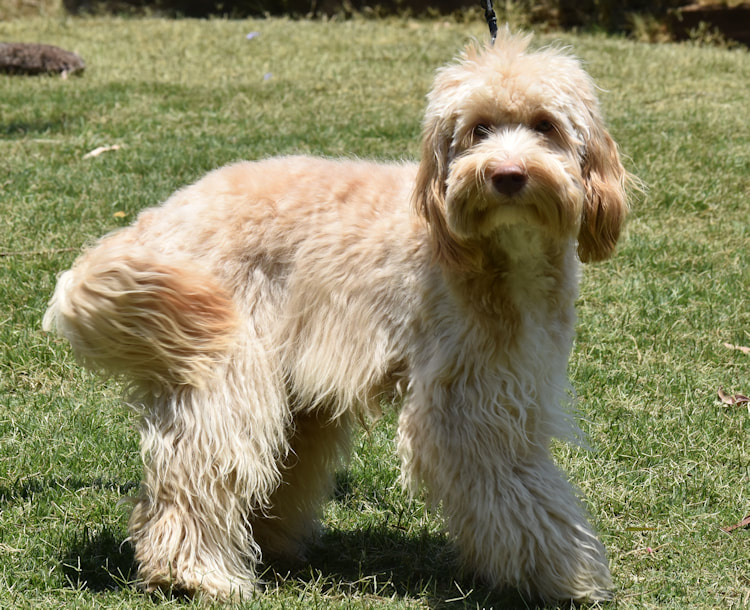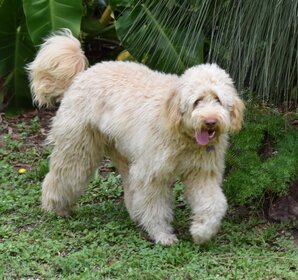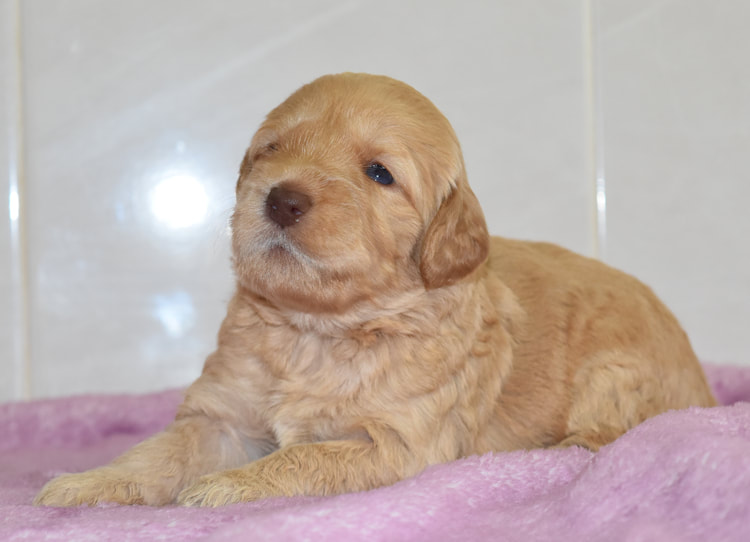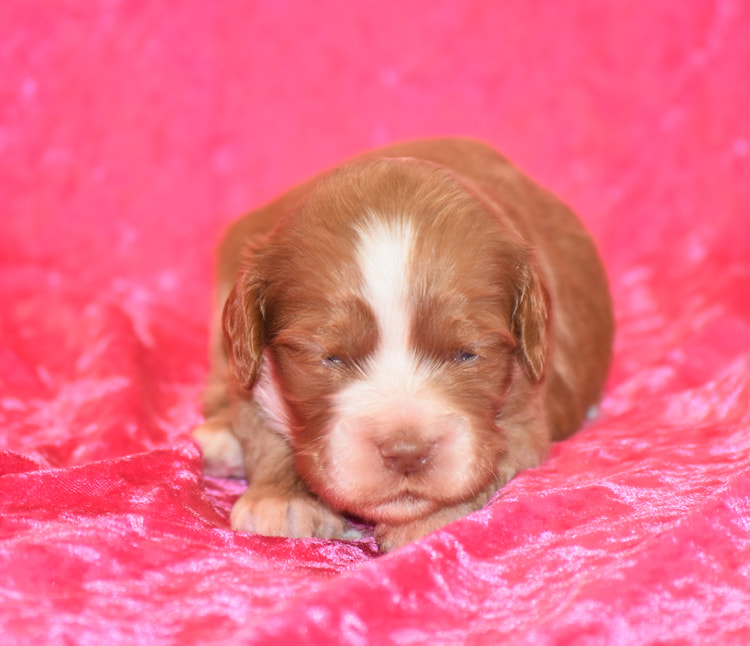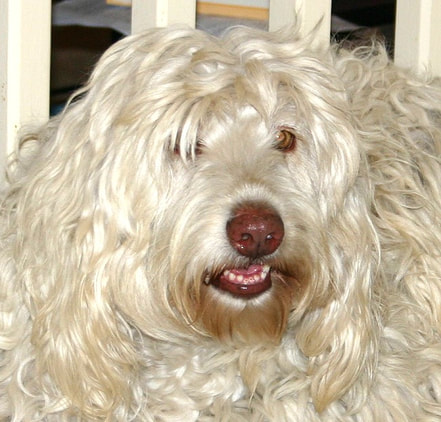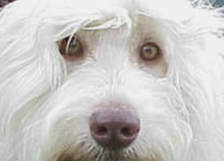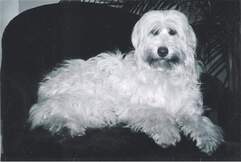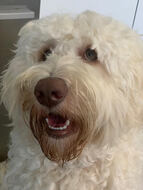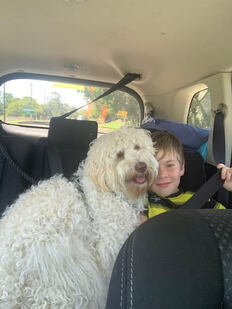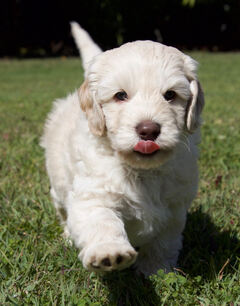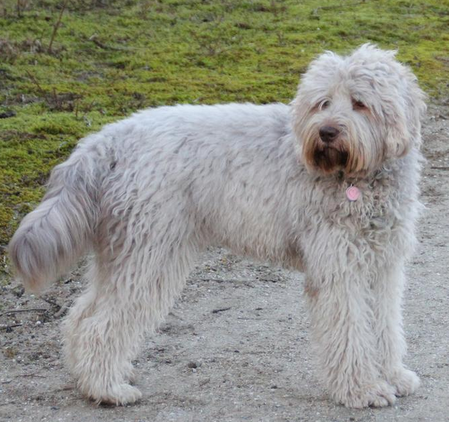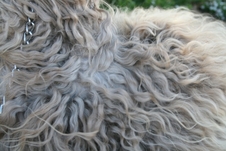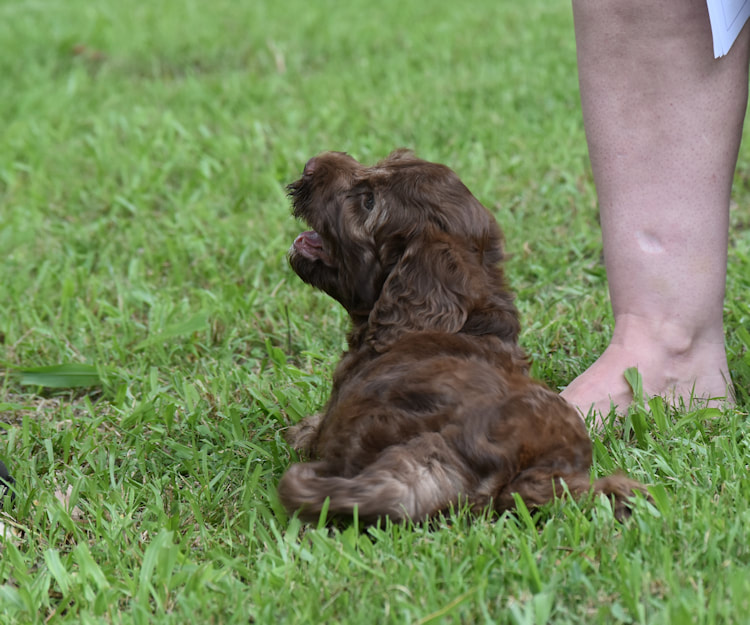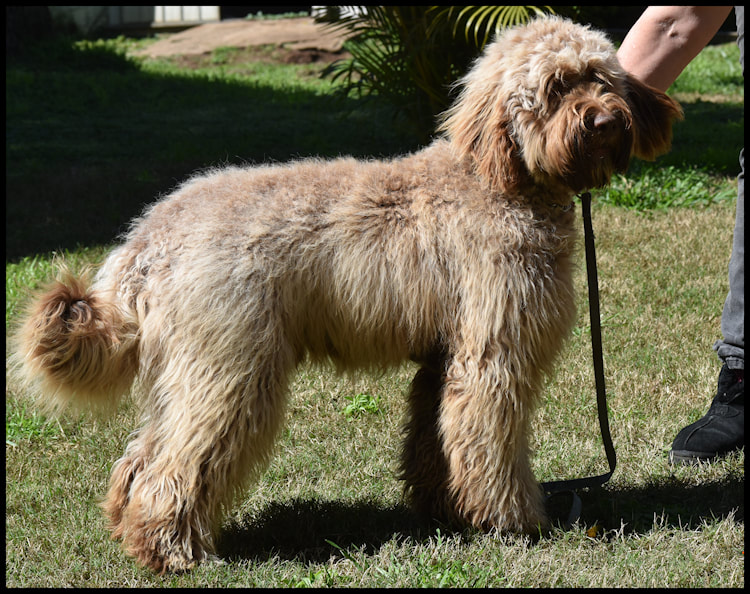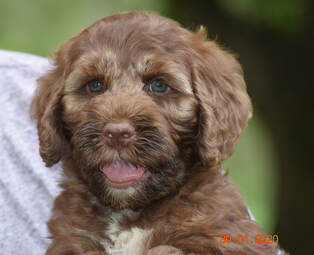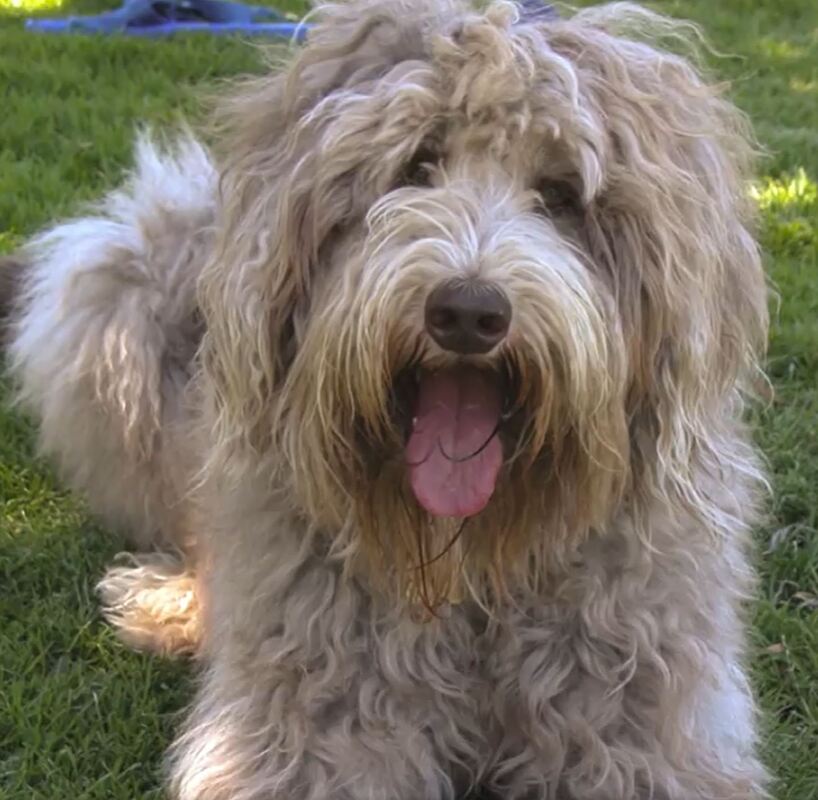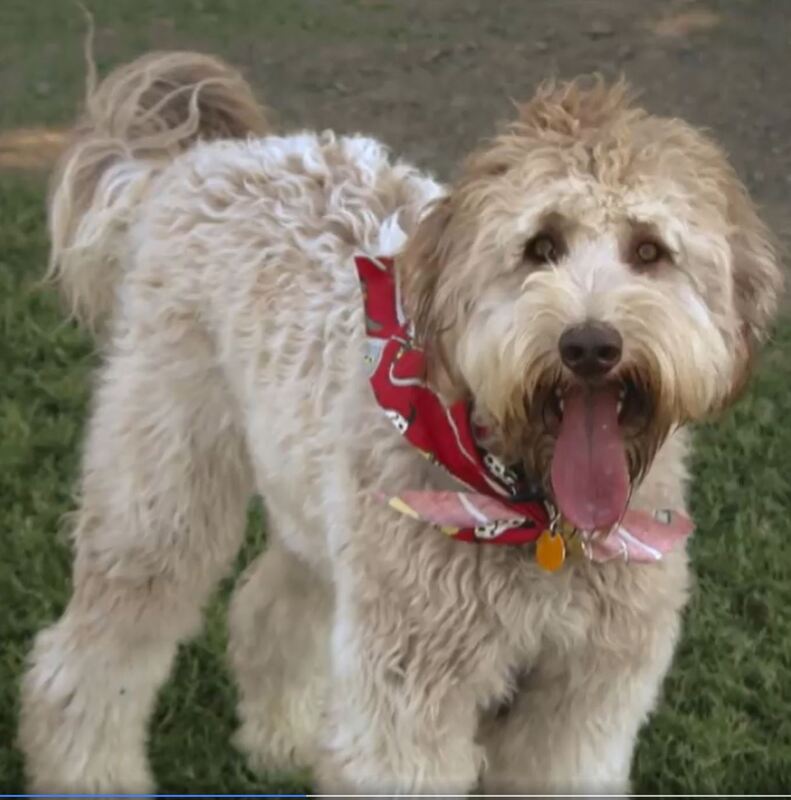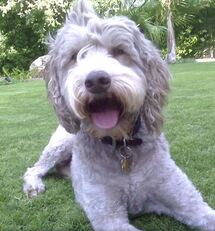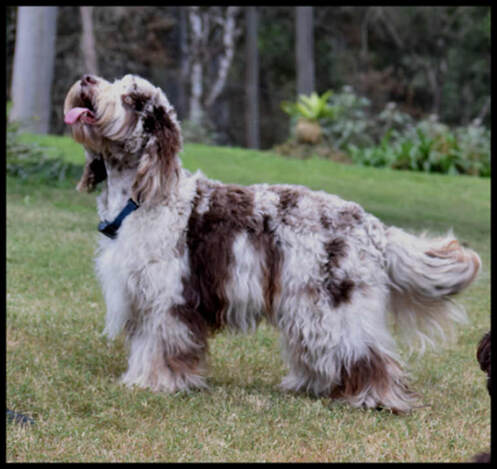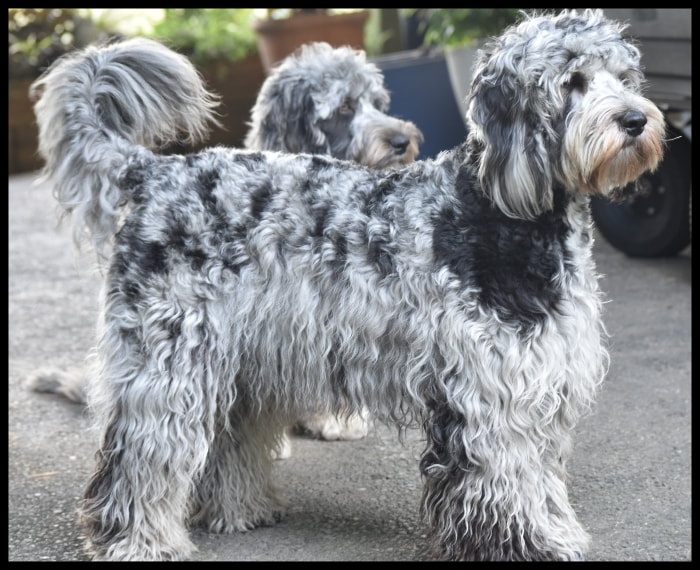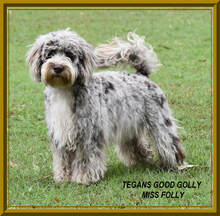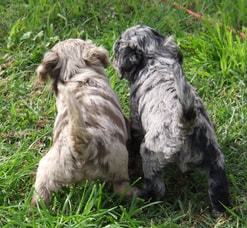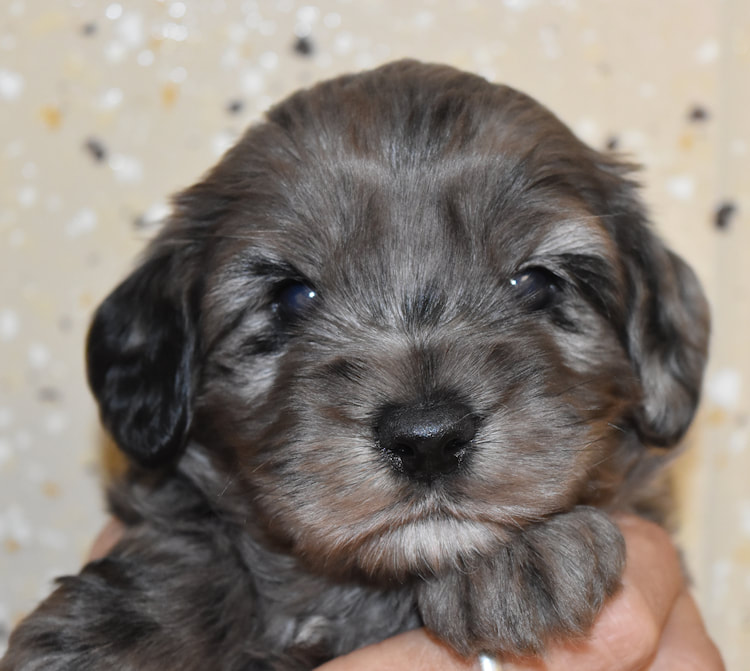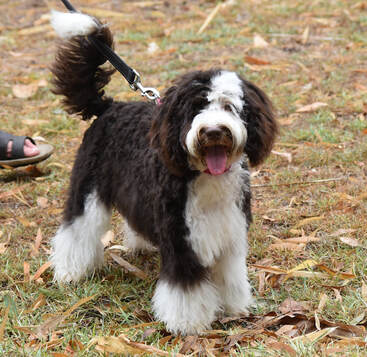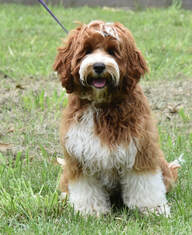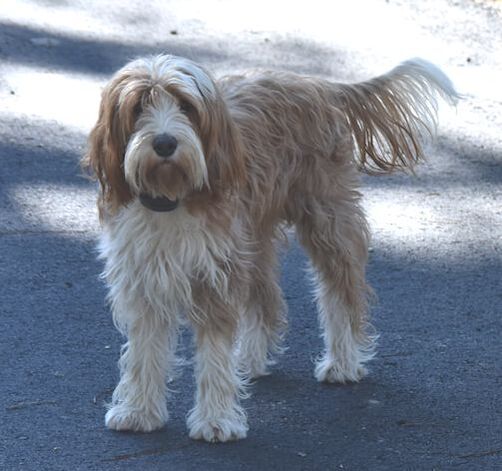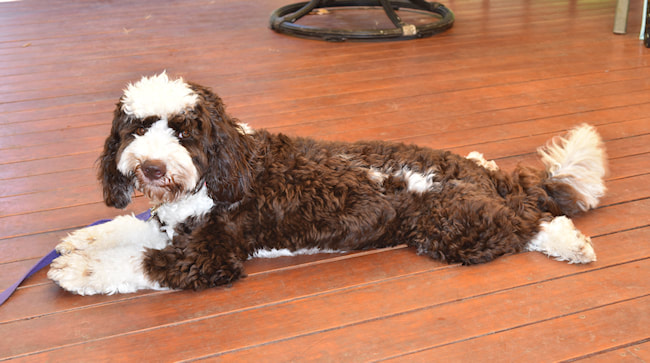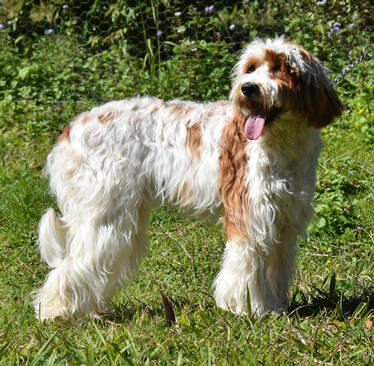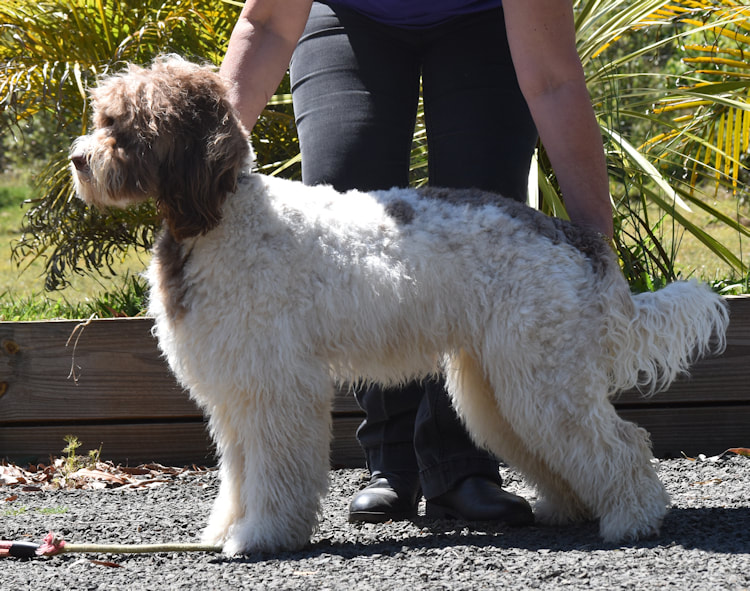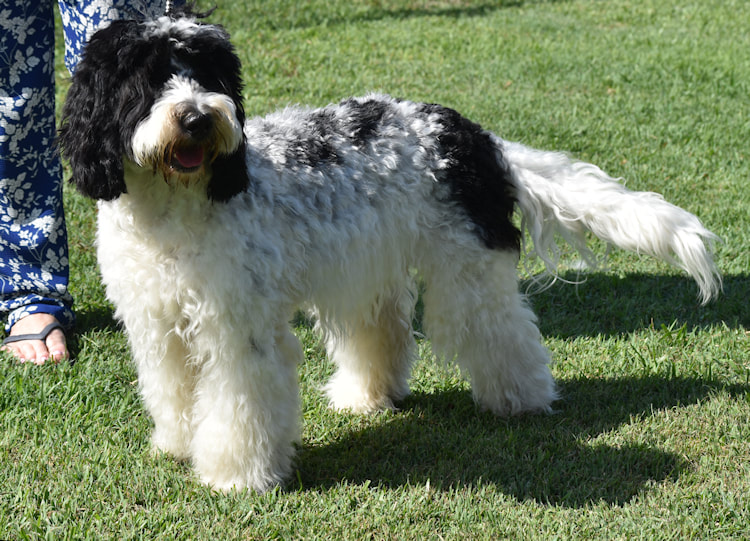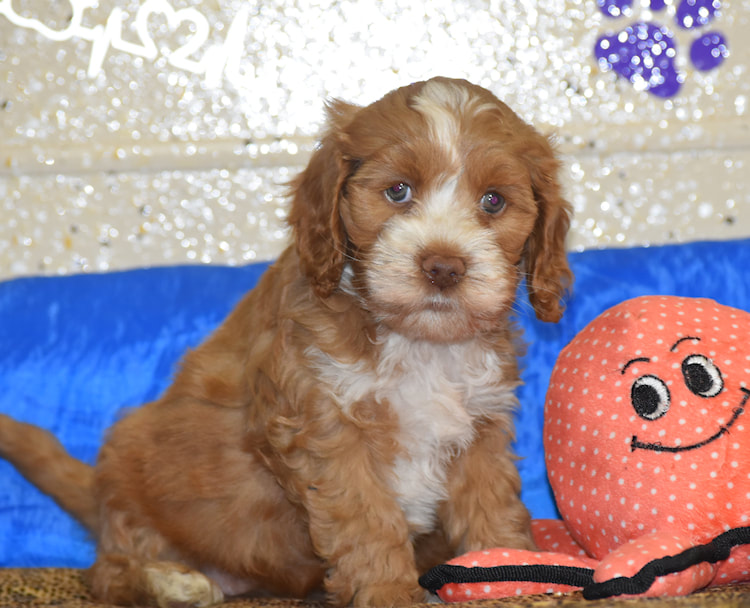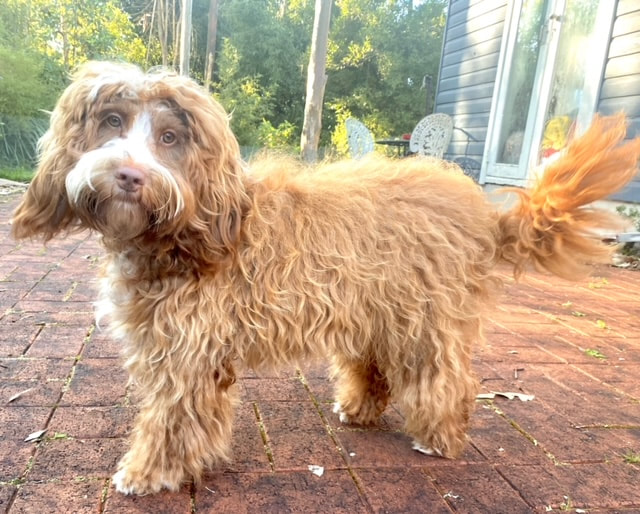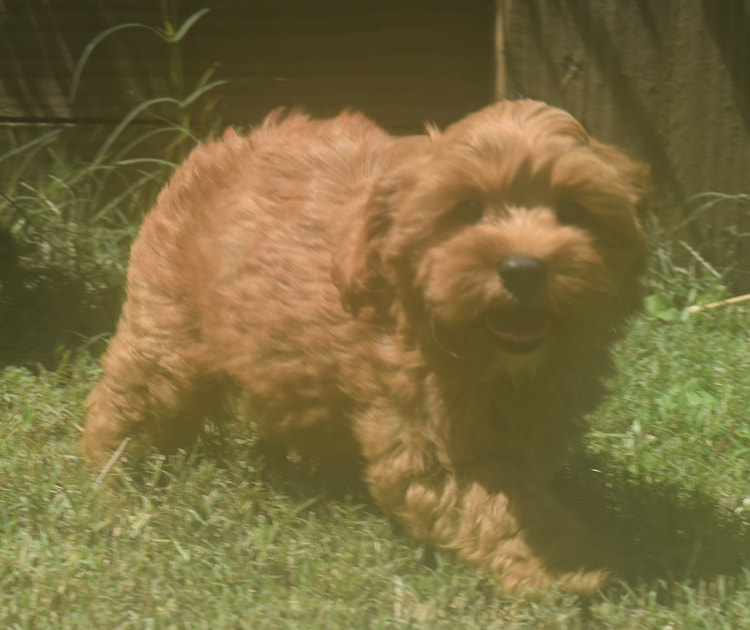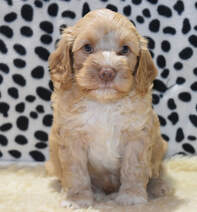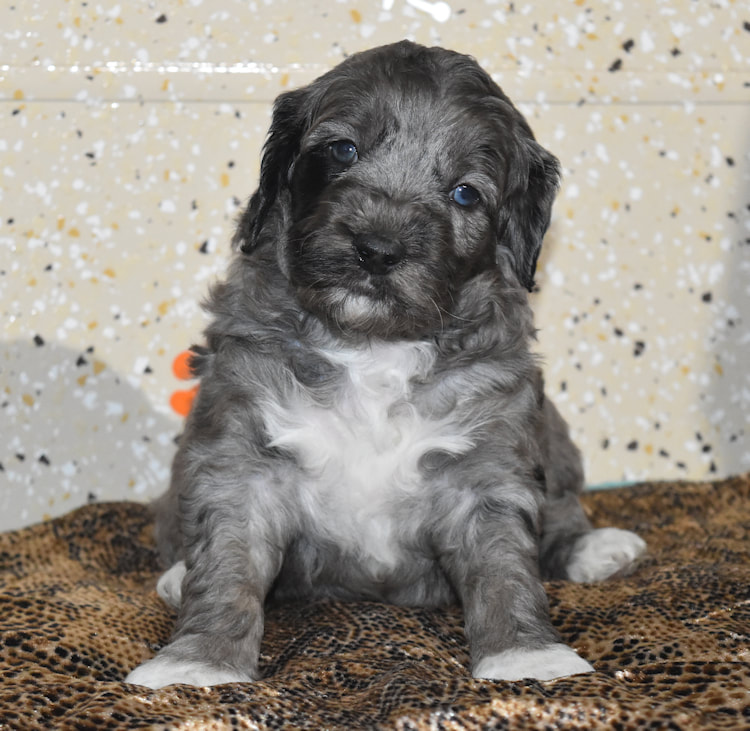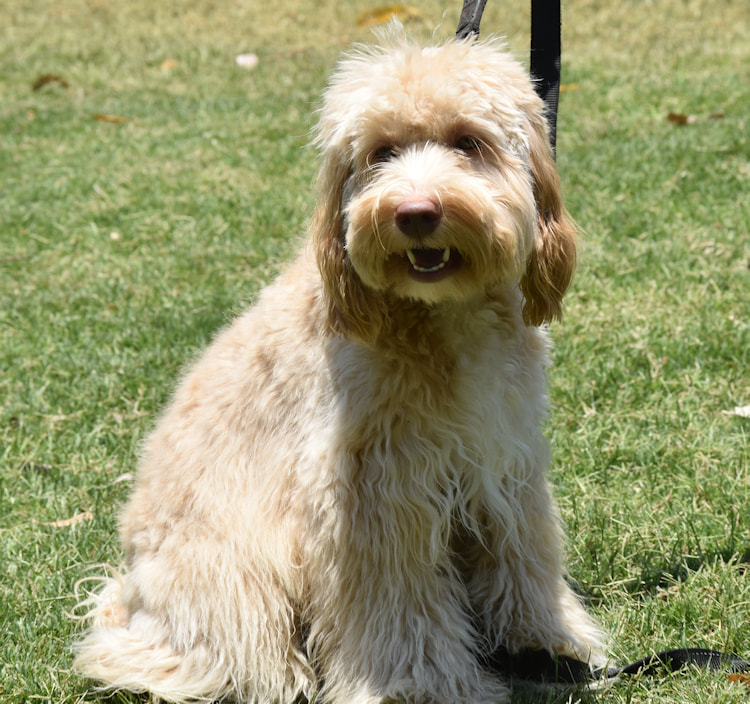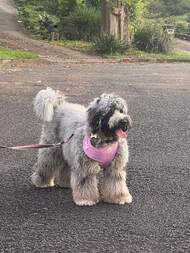Australian Cobberdogs Coats and Colours
|
There is a lot of confusion around correct colour identification of the Australian Cobberdog.
This is due to many breeders being familiar with the Labradoodle colour chart they then sell breeding stock to more learning breeders and pass on the incorrect colour information. The Australian Cobberdog is not a Labradoodle its colours are also differently described. |
Reviewed 2021
The Australian Cobberdog comes in a rainbow of colours.
Raven, Black, Brown,[Rare] Café , Parchment, [Rare] White, Blond, Gold, White Rose, Blond Rose, Red Rose [Rare], Red, Merle (Chocolate and Blue) and Parti / Pie Colours which are a combination of any one of the colours with white.
PIGMENT
There are two colours of pigment in the Australian Cobberdog. Black and Rose (same as liver in other breeds)
Pigment is the colour of the nose and the skin lining around the eyes, lip rims, and on the pads of a dog's paws. The 'rose' pigment found in the dilute colours is not a lack of pigment, but is a definite colour. This means that there is no predisposition to sunburning or cancer in the rose pigmented Australian Cobberdog.
Multiple colours. including Agouti, and Phantom, as commonly seen in the Labradoodle, are undesirable in the pure breed Cobberdog.
The Australian Cobberdog comes in a rainbow of colours.
Raven, Black, Brown,[Rare] Café , Parchment, [Rare] White, Blond, Gold, White Rose, Blond Rose, Red Rose [Rare], Red, Merle (Chocolate and Blue) and Parti / Pie Colours which are a combination of any one of the colours with white.
PIGMENT
There are two colours of pigment in the Australian Cobberdog. Black and Rose (same as liver in other breeds)
Pigment is the colour of the nose and the skin lining around the eyes, lip rims, and on the pads of a dog's paws. The 'rose' pigment found in the dilute colours is not a lack of pigment, but is a definite colour. This means that there is no predisposition to sunburning or cancer in the rose pigmented Australian Cobberdog.
- Raven, Black, White, Red, Gold, Blue Merle must have Black pigment.
- Brown, Cafe`, Parchment, brown Merle , White Rose, Blond Rose, Red Rose must have rose pigment.
- Parti is any above colour base with medium to large amounts of white on the lower body, neck, chest and face.
- Pie is a white base with any colour in patches over the whole or part of the body
- Phantoms are Black, brown, Cafe` , parchment or merle dogs with tan points,
- Sable is a gold dog with black tipping throughout the coat giving a rusty look. Sable can also have a Brown or Cafe` base.
Multiple colours. including Agouti, and Phantom, as commonly seen in the Labradoodle, are undesirable in the pure breed Cobberdog.
COLOURS EXPLAINED
|
BROWN (Rare group)
The true Brown has almost been lost due to uneducated crossbreeding. The Best Browns maintain their genetic colour traits when bred from Raven parentage. Sadly this magnificent colour is rare due to being bred to dogs with the silvering gene such as the Cafe` Most puppies born brown will change to Cafe`by adulthood.
|
Best Browns start off in puppies as a rich almost black brown, so dark it can look raven, Weather and particularly sun will fade the tips of the coat with bronze/gold highlights, but the rich colour is solid and very apparent toward the skin as adults. Sun tips must not be penalised. Pigment (nose, eye & mouth rims and foot pads) must be strong rose [liver] coloured. It is impossible to guarantee a coffee brown will remain dark for like is is a rare colour |
Cafe`
|
The Cafe is a delicate beautiful shade the colour of an Iced Milk Coffee. The pigment must be Rose and eyes hazel honey or brown. Ears, feet, tail and face may have darker shading all Cafe`are born varying shades of chocolate and lighten with age they carry the graying gene. Their mature colour can take as long as 3 years to fully develop. |
GOLD
|
Pigment is always black and eyes are shades of darker brown. The Gold dog may have slightly darker ears and the featherings may be of a lighter shade to the rest of the body.
|
When baby puppies, it takes a practiced eye to tell the difference between a dark gold and a Red, as these colours can either fade, or deepen with maturity. They are a package of delightful surprises as some who fade, can return to an even more vibrant colour when the adult coat comes through.
|
WHITE
BLOND
|
BLOND range through a variety of pale Buttermilk to two tone honey and all shades in between. Pigment is Black and eyes are shades of mid to deep brown. A correct coated blond does not need bathing like other light colored breeds of dog. The Cobberdogs coat sheds dirt and mud all by itself. Left to dry naturally, all traces of dirt just about vanish leaving no staining or smell behind. It is just another amazing feature of the genuine Cobberdog, one which is not shared by copies of the breed.
Blonds will often lighten by 12 months of age, in most cases their ears will remain darker their back will be a shad or two darker and their tails can be a shade darker.
|
Raven
|
There is something magical about the way the light catches the glossy black waves and swirls of a Raven as the dogs move about.
pigment must be black and eyes dark brown Raven is very light reflective giving it an amazing blue black sheen, much like a Raven bird is is named after.
|
True Raven is the most stunning of all colours and is the most under appreciated colour of the Australian Cobberdog, possibly because they do not photograph as well as the lighter colours. Ravens are valuable in breeding programs as they purify other colours. Countless times, when visitors see the Raven in real life, many have changed their preference to a Raven they are truly exquisite.
The natural gloss has to be seen to be appreciated, many people have come to me saying they do not want a black dog, only to meet one of our ravens and fall in love.
|
Black
|
Non -Raven Black is also underrated and is a beautiful colour, Blacks are more of a calm mat black unlike the shimmering Raven.
Black dogs will often have rust through their coats, most noticeable on the face and beard and can also have a sprinkling to quite a liberal mantle of white fibres.
|
Red
|
Just as there are different shades of red with red haired humans so it is with dogs. Red puppies are born red, throughout puppyhood the intensity will fade and return, often at the skin it will get lighter.A true red is a rare colour and very have to predict how intense they will be as adults, much like the brown dogs what they are as puppies is not always what they will be as adults, the only indication of true red is some not all will darken during their first 12 weeks if they do chances are high that they will develop into a true red ranging from a rich nuggety carrot to a dark mahogany.
Belongs to the Solid Group. and Rare group |
DILUTES
DILUTES are derived from Brown gene parentage This is what gives them the beautiful Rose [brown/liver] pigment [All Brown, Cafe`, Parchment and brown merles have brown pigment] All dilutes carry a brown gene in their DNA
rose dogs are also well loved for their Ghost eye colour. That starts as a clear bluish green and changes with maturity to a clear hazel often with a slight green tone. Unique and almost human like.
NOTE despite the unusual ghost like appearance the expression remains soft and kind
red rose
Red Rose dogs are just the same as Reds but with Rose pigment
This is a RARE colour
This is a RARE colour
BLOND ROSE
Blond Rose are just the same as Blonds but have Rose pigment
white rose
White rose is the same as white except for Rose pigment
Parchment
|
|
Progression of a true parchment from 6 week old already showing the cream under the soft pale chocolate through to old age.
|
Merle
|
Above Brown Merle
The Merle colour in dogs ran into trouble many moons ago when this technology was unavailable, unknowingly breeders bred a Merle to a Merle thus doubling up on the chromosome causing it to mutate and manifest itself in health disorders.
A wealth of genetic information is available now and to protect the Cobberdog from ever falling prey to health issues relating to indiscriminate breeding practices, we know that a Merle must be bred only to a non merle and if that dog has a merle parent it MUST be DNA tested to ensure that it does not have the chromosome invisible to the naked eye [no merle colour pattern showing in the coat]. Another mandate for breeding dogs with the merle colour is to maintain only brown eyes in the Merle Cobberdog colour group. Merle can have brown eyes, blue eyes one of each and often blue patch in the brown eye/s I made the decision long ago that the Australian Cobberdog should only have brown [or hazel] eyes. Much of the beautiful expression of a cobberdog is through its soft brown toned eyes, Blue eyes appear harsh/stairy and would spoil the beautiful Cobberdog face. Blue eye/eyed dogs should not be bred from. Merle Cobberdogs have the same temperament and health characteristics as all the other colour variants. |
The Merle colour is quite a unique colour gene as it has an extra chromosome, Many breeds have merle as one of their colour groups, often named slightly different like the Dapple Dachshund genetically they are all Merle.
Only experienced breeders truly dedicated to the breeds future and welfare and not the $ should breed Merles, Their genetics are complex and must be well understood, indiscriminate, ignorant breeding will produce pronounced health defects. Responsible breeders using DNA profiling will never produce less than a magnificent genetically healthy puppy. Above adult Blue Merle Above Adult Brown Merle
|
Parti Colour
Parti is any above colour with white markings, not more than 50% of the body and not less than 25% of the body, should be white, the ideal parti colour dog will have full colour body with large amounts of white on face, legs, chest, under carriage, neck and and tip of tail. small patches over the back are acceptable
PIE Colour
What is "with white" ?
With white is any colour dog with a little bit of white on the body somewhere with the exception of the chest, Many dogs of all colours will have small to tiny white spots on the chest [sternum] What the " With White" is identifying is the likelihood that the individual may carry a spotting gene
